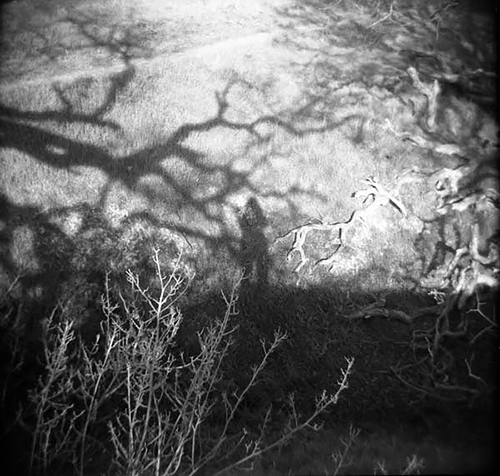J. M. Golding is a photographic artist based in the San Francisco Bay area. She chooses plastic, pinhole, and vintage film cameras as her primary tools: plastic cameras such as the Holga for the spontaneity they promote and their capacity to help create dreamlike images, pinhole cameras for their simplicity and their contemplative quality, and vintage film cameras for the subjectivity of the images that are possible. J. M.'s photographs have been shown internationally in numerous juried and invitational group exhibitions, and she is the recipient of the 2013 Holga Inspire Award, the Lúz Gallery Curator's Choice Award (2009), Best of Show in Wanderlust (Dickerman Prints, 2017, in collaboration with Al Brydon), and several Honorable Mentions in other juried exhibitions. Her work has also appeared in Black & White, Diffusion, Shots, F-Stop, Square, and Insight magazines, Inside the Outside, Don't Take Pictures, The Holga Darkroom, and The Shot and in two books of pinhole photographs. She has been profiled in LensCulture, F-Stop Magazine, Wobneb Magazine, Mother F-Stop, Toycamera.es, and Pinholista.
About Transitional Landscapes
These photographs contain transitions from outer landscape to inner, from objective landscape to subjective. Square frames of film that are typically separate join together to form new, integrated images that would not have been possible otherwise, wholes that are greater than the sum of their parts, landscapes that are simultaneously real and imaginary. In this way, and also by transcending the literal separation of the component scenes, they allude to psychoanalyst D. W. Winnicott's concept of the transitional object. The photographs embody the eye's transitions across the scene, moving incrementally from one perspective to another as they take on and combine multiple points of view. Because the overlapping exposures used to create the images are made sequentially, as compared to the single moment typically seen in photographs, the series of exposures in each image portrays transitions in time from one moment to the next, creating a connection between past and present, and possibly, present and future. Although the time and distance traversed are in many ways small, the transitions across them create surprising changes in what is visible.
